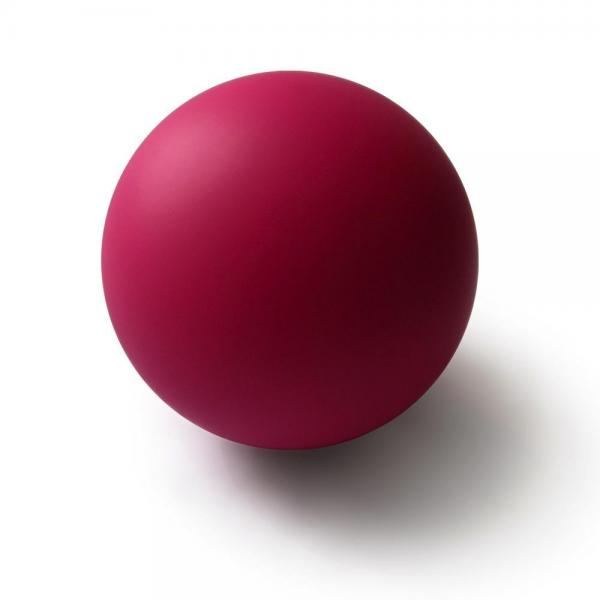Massage is a powerful tool for relaxation, pain relief, and overall well-being. While many people think of professional treatments in a spa setting, you can easily learn to work on your own back at home using simple tools, like a therapy ball. A therapy ball can help relieve tension, improve circulation, and enhance flexibility in your back muscles. In this article, we’ll explore the benefits of back therapy, how to choose the right ball, and effective techniques to achieve the best results
Benefits of Massage for Your Back
Regular massage significantly benefits your back health. It helps alleviate muscle soreness, reduces stress, and promotes relaxation. When you massage your back, it encourages the flow of blood and oxygen, which is essential for healing tight muscles. Additionally, massage can stimulate the nervous system, helping you feel more in control of your body and emotions. If you often experience back pain or tension, giving yourself back therapy may be a great addition to your self-care routine.
Want to learn about 10 more benefits of back therapy? Check out this article today! http://beautyfemina.com/10-benefits-of-massages/
Choosing the Right Ball

Before you begin, selecting the right ball is crucial for an effective and comfortable experience. There are a variety of balls available, ranging from firm tennis balls to textured massage balls designed for deeper pressure. Consider your preferences and sensitivity levels. If you’re new to self-massage, starting with a softer ball may be best until you get used to the pressure.
Want more tips on how to choose the best ball? Click the link below for more information. https://www.rawlogy.com/blogs/mobility-blog/choosing-best-massage-ball
Techniques for Massaging Your Back with a Ball
Now that you have your massage ball, it’s time to dive into the techniques for massaging your back. Follow the steps below to get the most out of your self-massage session.
Find a Comfortable Position:
Start by lying down on a flat, comfortable surface. A yoga mat, carpet, or soft blanket works well. You can also sit in a sturdy chair or lean against a wall, depending on your comfort level.
2. Locate Tension Areas:
Roll the ball beneath your back to identify areas that feel tight or sore. These are your tension points. Pay attention to areas along your spine, shoulder blades, and lower back, as these are common spots for tension to accumulate.
3. Begin Gently:
Start by placing the massage ball underneath the tension area. Gradually apply your body weight onto the ball to create pressure. Avoid placing the ball directly on the spine; instead, focus on the muscles surrounding the spine for a safer massage experience.
4. Ease into the Pressure:
Allow your body to get accustomed to the pressure. Start with gentle movements, rolling the ball back and forth slowly. You can use your arms and legs to control the movement. This gentle motion can help warm up your muscles before applying more targeted pressure.
5. Focus on Specific Areas:
Once you feel comfortable, you can focus on specific muscle knots or tight spots. For deeper relief, lean into the ball and hold the pressure on those areas for 20-30 seconds. You can also move the ball in small circles to release tension.
6. Incorporate Breathing:
As you massage, breathe deeply and steadily. Inhale through your nose and exhale through your mouth. Deep breathing can enhance relaxation during your back therapy session, allowing your muscles to release more effectively.
7. Experiment with Angles:
Change your body position to target various areas of the back. You can shift your weight to roll the ball up toward your neck or down toward your lower back. This dynamic movement adds variety to your back therapy routine.
8. Include the Shoulders:
Don’t forget to extend your massage to your shoulders. You can use the ball against a wall to target the shoulder area, leaning into the ball at various angles and rolling it along the shoulder blades.
9. Massage Duration:
Aim for 10-20 minutes of back therapy time. Listen to your body, and if you feel sore or uncomfortable, it’s okay to take a break or ease up on the pressure.
10. Hydrate After Your Massage:
Once you finish your back therapy session, drink some water. Hydration helps flush out toxins released during the massage and supports muscle recovery.
11. Make It a Routine:
For optimum results, practice back massage regularly. Incorporating this practice into your weekly routine can help maintain your back’s health and flexibility. You can even set aside specific days for your back therapy, helping to turn it into a relaxing ritual.
12. Pay Attention to Your Body:
Each person’s body is different, and it’s essential to listen to your body when massaging. If you encounter any sharp pain or discomfort, stop and reassess your technique or seek professional guidance.
Conclusion
Self-massage using a ball is an effective and accessible way to relieve tension in your back. By incorporating these techniques into your routine, you can enjoy the numerous benefits of back therapy, including pain relief, increased flexibility, and improved overall well-being. Back therapy is a valuable self-care practice that supports your body and mind, helping you navigate daily life with ease. Remember to take your time, explore different techniques, and enjoy the incredible feeling of a relaxed and rejuvenated back.
Want to learn about the 10 benefits of a back massage? Check out this article today! http://beautyfemina.com/10-benefits-of-massages/

